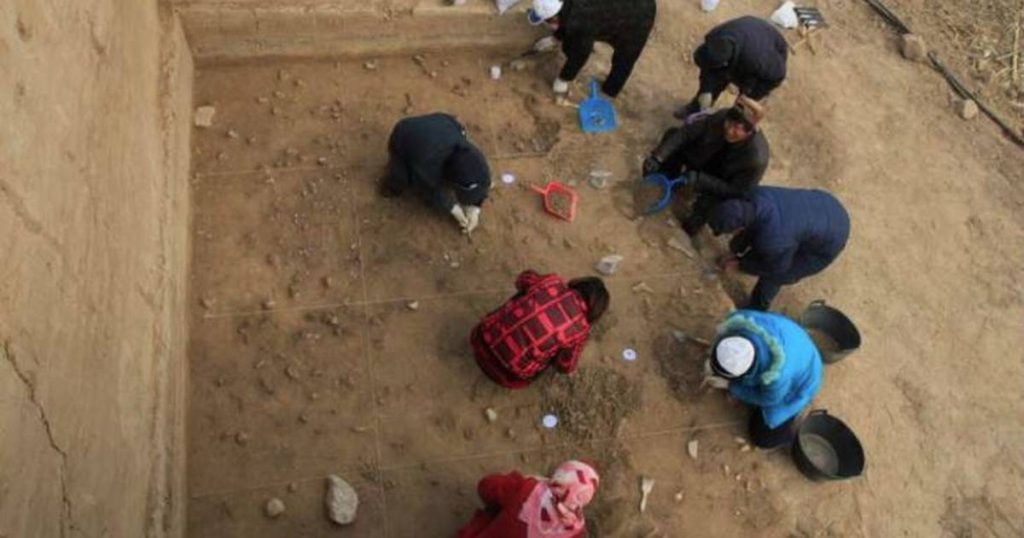Madrid 2 (European press)
Archaeological excavations at the site of Xiamabi in northern China have revealed innovative behaviors and tool sets unique to a culture dating back 40,000 years.
The discovery of this new culture, reported in Nature, indicates the processes of innovation and cultural diversification that occurred in East Asia during the period of genetic and cultural hybridization.
Although previous studies have demonstrated that Homo sapiens reached northern Asia about 40,000 years ago, much remains unknown about the life and cultural adaptations of these early peoples, as well as their possible interactions with ancient groups.
In the search for answers, the Nihewan Basin, with a wealth of archaeological sites ranging in age from 2 million to 10,000 years, provides one of the best opportunities for understanding the evolution of cultural behavior in Northeast Asia.
With the oldest known traces of ocher processing in East Asia and a collection of leaf-shaped stone tools, Shimabi contains cultural expressions and traits that are unique or extremely rare in Northeast Asia. Thanks to the collaboration of the international team of scientists, analysis of the results provides important new insights into cultural innovation during the expansion of the Homo sapiens community.
“Xiamabi is distinguished from any other known archaeological site in China by having a new set of early cultural features,” says Dr. Fa-Gang Wang of the Hebei Provincial Institute of Cultural Relics and Archeology, whose team was him. The first to excavate the site.
“The ability of hominins to live in northern latitudes, with very cold and seasonal environments, was likely facilitated by the evolution of culture in the form of economic, social and symbolic adaptations,” explains Dr. Xixia Yang, a researcher with the Chinese Academy. Sciences and the Max Planck Institute for the Sciences of Human History, in Jena (Germany) -. Ciampi’s findings help us understand these modifications and their potential role in human migration.”
An important cultural feature found in Ciampi is the extensive use of ocher, as evidenced by the artefacts used to process large quantities of the pigment. Artifacts include two ocher pieces with different mineral compositions and an elongated slab of limestone with smooth areas with ocher spots, all on a red-stained sedimentary surface.
Analyzes carried out by researchers at the University of Bordeaux (France), led by Professor Francesco Derico, indicate that different types of ocher were brought to Ciamabe and processed by beating and abrasion to produce powders of different colors and textures, the use of which penetrated the floor of the house. The production of ocher at Ciampi represents the oldest known example of this practice in East Asia.
The stone tools of Ciampi represent a new cultural adaptation of northern China 40,000 years ago. Given that little was known about the stone tool industries in East Asia until microblading became the dominant technology about 29,000 years ago, Xiamabei’s discoveries provide important insight into the tool-making industries during a transitional period. key.
Shimabi leaf-shaped stone tools were unique to the region, the vast majority of which were miniature, with more than half being less than 20 mm. Seven of the stone tools showed clear evidence of attachment to a handle, and functional and residue analyzes indicate that the tools were used for digging, scraping skin, carving plant material, and cutting soft animal material.
The inhabitants of the site made tools with handles and multi-purpose tools, illustrating a complex technical system of turning raw materials that was not observed at the older or slightly newer sites.
The record that emerged in East Asia shows that many adaptations were taking place when modern humans entered the region about 40,000 years ago. Although no hominin remains have been found at Ciamabe, the presence of recent human fossils at the contemporary site of Tianyuandong and at the slightly higher Salkhet and Zhoukoudian Cave sites indicates that the visitors to Ciamabe were Homo sapiens.
Diverse stone techniques and the presence of some innovations, such as tooling and ocher processing, but not other innovations, such as formal bone tools or ornaments, may reflect an early attempt at colonization by modern humans.
This colonization period may have involved genetic and cultural exchanges with ancient groups, such as the Denisovans, before they were replaced by later waves of Homo sapiens using microblade techniques.
Given the unique nature of Ciamabe, the authors of the new paper argue that the archaeological record does not fit the idea of continued cultural innovation, or the whole set of adaptations that allowed early humans to expand out of Africa and across the globe.
Instead, say the authors, we should expect to find a mosaic of patterns of innovation, with the spread of past innovations, the persistence of local traditions, and the local invention of new practices, all in transition.
Professor Michael Petraglia of the Max Planck Institute in Jena says: “Our findings show that current evolutionary scenarios are quite simple, and that modern humans and our culture emerged through recurring but different episodes of genetic and social exchanges across wide geographical areas. Rather than as a single rapid wave of Spread across Asia.

“Social media evangelist. Student. Reader. Troublemaker. Typical introvert.”

:quality(70):focal(917x454:927x464)/cloudfront-us-east-1.images.arcpublishing.com/elfinanciero/IK6YWCPEYFBRRFEKOPGFRQXC54.jpg)





More Stories
The College of Humanities, Social and Educational Sciences celebrates the graduation of 397 male and female students
Japanese ancestral ritual that is an effective and quick cleaning method: in 15 minutes organize your home and help emotional well-being
The City of Arts and Sciences of Valencia presents the first public exhibition of Pablo Achugarry in Spain